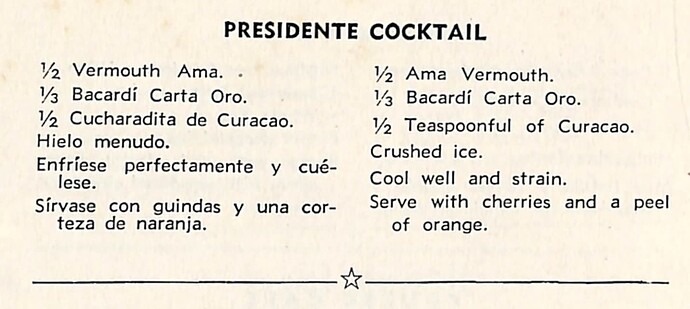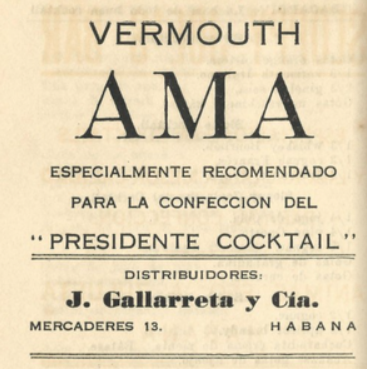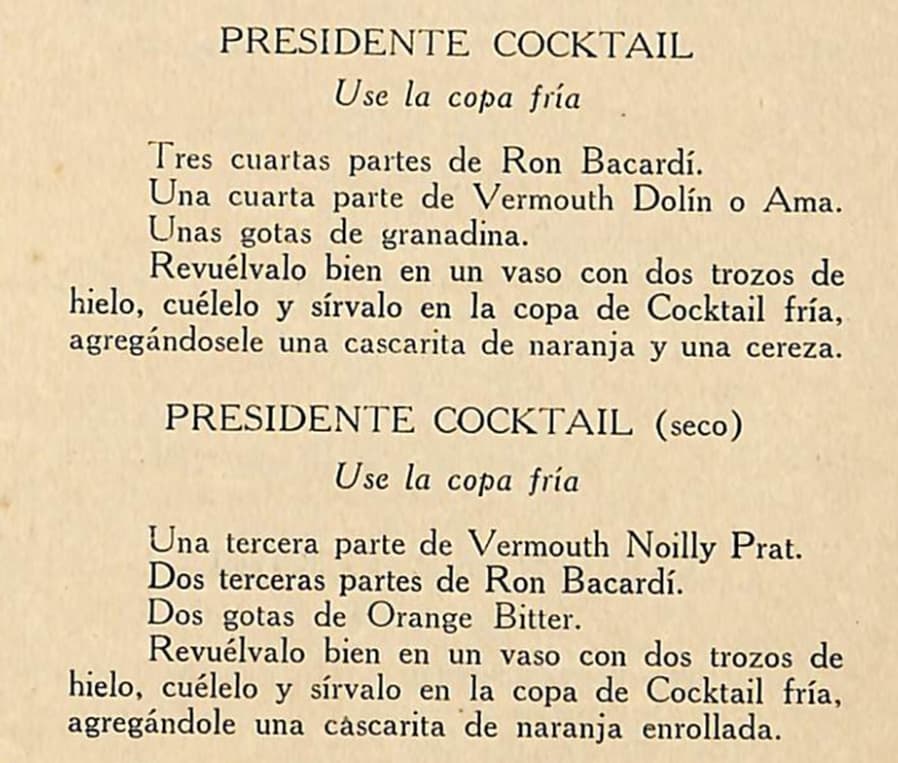Hi everybody! I hope all of you spend a wonderful evening tonight!
I found that weird “Ama” brand of vermouth and I was wondering if, by chance, could be chambery style. Despite spending some time searching for it on the net I wasn’t able to even find any reference of its existence.
BTW, I found the reference in Presidente cocktail recipe in the 1939 edition of “Floridita Cocktails”
Thanks a lot in advance, and (again) have a wonderful christmas evening!
2 Likes
I forgot to mention, I’ve found another reference in the “Manual Oficial” of “Club de Cantineros” of Cuba (1930). In that book the recipe for a Presidente cocktail calls for “vermouth chambery”, but you can also find an ad for “Vermouth Ama”, and the text says: “specially indicated for the making of Presidente cocktail”
One could assume any contradiction (in case Ama is not chambery) would be noticed and corrected, but assumptions sometimes leads to error.
Another assumption would be we’re dealing with a local brand but… grapes in Cuba?
Could be that “Ama” is a defunct chambery brand?
Ama vermouth is mentioned also in the Presidente recipe in the “Recetario Internacional de Cock-tails” of 1937, but a further clue about the lineage of this vermouth could be found in “Libro de Cocktail” by Juan A Lasa (1929) where one can read “1/4 Dolin or Ama Vermouth” in the recipe for that cocktail
Maybe it’s a silly question and everybody knows Ama Vermouth, but I hate to make assumptions. Here are the snapshots from the books and thanks for your kindness
1 Like
(pics were uploaded in the same order as mentioned, with the only exception of the recipe in “Recetario Internacional de Cock-tails”, not included because I think was redundant)
1 Like
This from 1948 El Arte del Cantinero should cover most of your queries.

Ama was an Italian brand of vermouth. They probably made, as most did by the 1930s, the three styles (dry, bianco, rosso) and their bianco was what Cubans used when the real Chambéry was not available.
By the way, there was at least one Cuban vermouth brand. When you don’t have wine, you buy it. There is, after all, Scottish rum.
3 Likes
Ama was registered in Cuba and elsewhere in Latin America in 1913, its proprietor then being one Filomeno de Stefano, about whom I’ve been able to find zilch. In the late 1920s, Ama was owned by Mario Alemagna, who was based in Sesto San Giovanni, a suburb of Milano (where Campari was based, and still is). Ama seems to have been chiefly or maybe even exclusively devoted to selling its vermouth in Latin America, mostly in Cuba.
5 Likes
Thanks a lot Francois! Very useful data indeed! Regarding cuban vermouth brands I´ve found that “Casa M. Mariño” actually made two different brands: Faisan and “salivateur” (what a name!)
Thanks again for your kind reply!
1 Like
Hi David! Daniel Estremadoyro here, always a great pleasure to be in contact with you! Thanks a lot for so much data about the brand! Hope everything is going great for you mi amigo!
Great to hear from you my friend! Glad to be of assistance and hope somehow to see you soon!
1 Like




